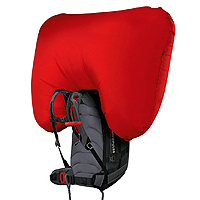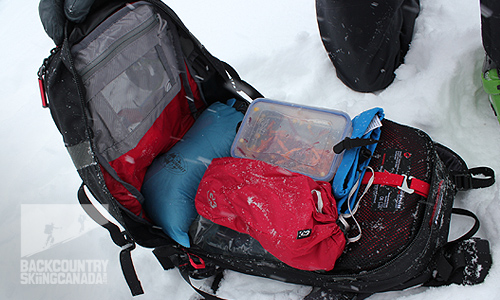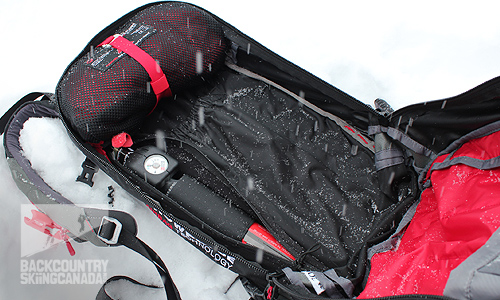


SITE LOGIN
-
REVIEWS
- Ski Gear
- Clothing
- Accessories
- Off-Season Gear
- Lifestyle
- Lodges and Accommodation
- Nutrition
- Manufacturers
- Destinations
- Training
- Gear of the Year
- Best New Summer Gear
-
Holiday Gift Guide
-
Holiday Gift Guide 2024
- Holiday Gift Guide 2024 Base Layers
- MSR Explore Revo Snowshoes
- Fieldsheer Backcountry Heated Jacket
- Fieldsheer Premium 2.0 Merino Heated Socks
- MEC Hut Booties and Slippers
- Arc’teryx Kopec GTX Shoe
- Arc’teryx Kragg Insulated Approach Shoes
- Gregory Verte 18 Backpack
- Grundens Deck-Boss Ankle Boot
- MEC Northern Light Vest
- Montec-Scope-Ski-Goggles
- Mountain Hardware Kor Airshell Hoody
- Mountain Hardware Kor Alloy Crew
- Arcade Atlas Belt
- Dynafit Ridge Dynastretch Jacket
- Shokz OpenRun Pro 2 headphones
- Buff Merino Move Multifunctional Neckwear
- Bootdoc Foot Warmer
- Cotopaxi Allpa 42L Travel Pack
- DPS LastBag
- DPS PHANTOM Glide At-Home Kit
- DPS Mission Quiver Roller
- Dragon Amped sunglasses
- Dragon DX3 Plus OTG photochromic goggle
- Fuse Lenses Anclote Flashback
- Garmin Fenix 8 Solar Sapphire Watch
- Gregory Alpaca Gear Tote 30
- Hotronic Boot Dryer
- MEC Aluminum Pot Set
- Gnara Go There Pants
- Grundens Shackleton 2.0 Duffel
- Jones Deeper 19L Backpack
- Le Bent Core Midweight Crew base layer
- Leatherman ARC
- Montane Nordes Hooded Softshell Jacket and Pants
- Helly Hansen Odin Everdown Hooded Jacket
- Helly Hansen Verglas Infinity Shell Jacket 2.0
- Montec Fawk Ski Jacket
- Pomoca Free Pro 2.0 Skins
- Rab Glaceon Pro Down Jacket
- Rab Khroma Converge GORE-TEX Ski Jacket & Pants
- Smith Squad MAG Goggles
- Stellar Guide Aerogel Hybrid Hood 2.0
- Stellar Ultralight Down Hood 2.0
- Arms of Andes Alpaca Half Zip & Wool Leggings
- Cotopaxi Allpa 70L Duffel Bag
- Giro Taggert Mips Helmet
- Loonr Hi Flyer Boots
- Paka Mountain Crew
- Roll Recovery SUPERPLUSH Classic Shoes
- Smartwool Smartloft Hooded Jacket and Pants
- Ortovox Switchback 32 Ski Touring Backpack
- Cotopaxi Allpa X 3L Hip Pack
- Giro Sagen Ski Goggle
- Icebreaker Ski+ Over the Calf Socks
- MEC-Fireside-Fleece-Snap-Pullover
- Montec Roast Mittens
- Mountain-Hardware-Sunblocker-Hoody
- MSR Titan Kettle 900 ml
- Tailgate-Industries-The Gondom-Goggle-Cover
- Wild Country Rope Tarp
- Bootdoc Race Merino PFI 50 Socks
- Remind Soles Destin Impact Insoles
- Kari Traa Rose Baselayer Half Zip Top and Pants
- Le Bent Midweight Quarter Zip
- Ombraz Dolomite Sunglasses
- Ortovox Fleece Rib Hoody
- Ortovox Merino Thermovent Base Layer
- Smartwool Intraknit Merino Tech Half Zip
- Suunto Wing Bone Conduction headphones
- Sweet Protection Adapter Mips Helmet
- Sweet Protection Connor Rig Reflect Goggles
- Zeal Optics Selkirk Glacier Glasses
- Norrona more flex1 Pants
- Norrona Octa Zip Hood
- Norrona Lyngen Alpha100 Zip Hood
- MEC Deluxe Pillow
- Holiday Gift Guide 2023
- Holiday Gift Guide 2022
- Holiday Gift Guide 2021
- Holiday Gift Guide 2020
- Holiday Gift Guide 2019
- Holiday Gift Guide 2018
- Holiday Gift Guide 2017
- Holiday Gift Guide 2016
-
Holiday Gift Guide 2024
- Pro Skier Interviews
- NEWS
- STORE
- ROUTES
- LODGING
-
VIDEOS
- 2022/23 Gear Reviews
- 2021/22 Gear Reviews
- 2020/21 Gear Reviews
- 2019/20 Gear Reviews
- 2018/19 Gear Reviews
- 2017/18 Gear Reviews
- 2016/17 Gear Reviews
- 2015/16 Gear Reviews
- 2014/15 Gear Reviews
- 2013/14 Gear Reviews
- 2012/13 Gear Reviews
- 2011/12 Gear Reviews
- 2020 Outdoor Retailer
- 2019 Outdoor Retailer
- 2018 Outdoor Retailer
- 2017 Outdoor Presscamp
- 2017 Outdoor Retailer
- 2016 Outdoor Presscamp
- 2016 Outdoor Retailer
- 2015 SIA Show
- 2014 Outdoor Retailer
- 2013 SIA Show
- 2012 Outdoor Retailer
- Tips and Tricks
- Backcountry Skiing
- SAFETY
- ABOUT
- REVIEWS
- NEWS
- STORE
- ROUTES
- LODGING
-
VIDEOS
- 2022/23 Gear Reviews
- 2021/22 Gear Reviews
- 2020/21 Gear Reviews
- 2019/20 Gear Reviews
- 2018/19 Gear Reviews
- 2017/18 Gear Reviews
- 2016/17 Gear Reviews
- 2015/16 Gear Reviews
- 2014/15 Gear Reviews
- 2013/14 Gear Reviews
- 2012/13 Gear Reviews
- 2011/12 Gear Reviews
- 2020 Outdoor Retailer
- 2019 Outdoor Retailer
- 2018 Outdoor Retailer
- 2017 Outdoor Presscamp
- 2017 Outdoor Retailer
- 2016 Outdoor Presscamp
- 2016 Outdoor Retailer
- 2015 SIA Show
- 2014 Outdoor Retailer
- 2013 SIA Show
- 2012 Outdoor Retailer
- Tips and Tricks
- Backcountry Skiing
- SAFETY
- ABOUT
TOP VIDEOS
Mammut Ride 30 Removable Airbag System
 Mammut is a Swiss company that makes excellent products. They began with climbing rope 150-or-so years ago and have grown into a big brand in Europe and globally. We reviewed the Mammut Ransom Jacket and loved it as a lift-service jacket. We like the Mammut Element Barryvox Transceiver so much, we named it Gear of the Year this season. The Swiss sense of clean, economical design and function is apparent in all their products—and the Mamnut Ride 30 Removable Airbag System is no exception.
Mammut is a Swiss company that makes excellent products. They began with climbing rope 150-or-so years ago and have grown into a big brand in Europe and globally. We reviewed the Mammut Ransom Jacket and loved it as a lift-service jacket. We like the Mammut Element Barryvox Transceiver so much, we named it Gear of the Year this season. The Swiss sense of clean, economical design and function is apparent in all their products—and the Mamnut Ride 30 Removable Airbag System is no exception.
We shot a video a couple of weeks back that outlines our experience with the Mammut Ride 30 Airbag pack. Check it out immediately below:
Here’s a handy little pocket of the top. It’s lined with velvety stuff so may be suitable for goggles. I’d still put my goggles in a hard case though. When the bag is packed to capacity, this pocket might scrunch a pair of goggles when zipped up.

Check out the easy access front pocket for avy tools. As mentioned in the video, this pocket will accommodate shorter shovel handles and not some of the longer ones. Otherwise, there are dedicated sleeves for a probe and shovel shaft.

Inside lip of the avy tools sleeve features some good safety info. There’s also some good info on a little sticker you can adhere directly to the Element Transceiver. I’m a big fan of this. The more I learn about dealing with avalanche danger, assessing situations and potentially addressing them, the more respect I have for tried-and-true processes. And having a cheat sheet is always a good idea.

The contrasting design of different zippers may, at first, seem unnecessary. I’ve learned, though, that they make life a lot easier. As with any pack, as you grow accustomed to it, you develop tricks and habits so you always know where what you need is located. I always tuck my water along one of the side pockets and the special, easily identifiable zippers help with locating.

Fully loaded. For a big day out, smart packing is required. I got it down to a science though. See below: down layer, first-aid kit, lunch, skins, extra gloves, water. There’s also a handy windowed map pocket on the upside. You can see it here, without the map.

Here’s the pack, emptied of its contents. You can see the air canister at left and the avy bag strapped in up top. A small price to pay space-wise for the added safety that an airbag offers. This system allows for the airbag and canister to be moved to other compatible packs. Handy!

Here’s a cool feature—stomp-proof metal buckles. How many times have you inadvertently crushed your hip-belt buckle? It’s the kind of thing that can turn into a pain if you are up at a hut for a week’s touring. Not a problem with these puppies.

Here’s the handy handle. It tucks into its zippable sleeve when not in use. Remember to take it out on the uptrack too. Avalanches can take you out on the way up—and the way down.

Here is the pack on a back. The red U hooks near the top strap work to attach your helmet. The A frame system works very well. There’s a diagonal system that’s “tucked-in” if you are a diagonal, ski-carry person. I’m a committed A framer.


Here is the feature set list from the Mammut website:
- Removable Airbag System R.A.S.
- Safety leg loop
- V-frame 6 mm aluminum, adjustable
- 2-layer, high-density EVA back padding, hip and shoulder belts with stretch fabric cover
- Removable, padded hip belt
- Front pocket for avalanche safety equipment
- Diagonal, stowable ski attachment
- Snowboard carrier
- 2 front gear loops for material and helmet fixation
- Side compression straps
- Padded goggle pouch
- Zipped inner compartment with key clip
- SOS label with emergency instructions
- Hydration system compatible
- Base fabric is 420D Nylon , upper fabric is 420D Nylon Tritan
-Back system is CONTACT V Frame
Verdict:
Skiing with an avalanche pack in sketchy terrain is a smart thing to do. As user experience builds up, there’s more and more data indicating that it is one of many things backcountry skiers can do to mitigate their risk. Avy bags are relatively new to the scene (especially in North America) so the “kinks” are still being worked out with evolving technology and design. For example, Black Diamond has introduced the Halo backpack with “Jetforce” battery-powered airbag deployment and many small manufacturers are introducing their own models. The advantage with Mammut avy bags, with snowpulse technology, is that they are one of the first companies to offer such a product. In other words, they have a head start in terms of working out the kinks. When a “kink” can be the difference between life and death, I say it makes sense to go with a more proven technology.
So, Mammut = good avy bags. Check. Looking more closely at the Ride 30 bag, it’s clear that avy bag design has evolved even in the couple of years since the Ride 30 was first offered. In other words, if I had my druthers, I’d likely opt for one of the “Pro” models with the P.A.S. for the added protection, a little extra room, adjustable sizing and “backdoor” access. The Ride 30 is a very nice bag that significantly ads to safety in avalanche zones—regardless of whether it has all the latest bells and whistles. And I appreciate it.
Mammut Ride 30 Removable Airbag System R.A.S in action. Powder Creek Lodge.

SPECS:
Price: approx. $850 CDN, all in
Volume: 30L
Color: Black/grey, blue/grey
Sizing: Regular and small
Weight: 2400g with airbag system, 1550g without
PROS:
Because of the history behind Mammut/Snowpulse avalanche airbag systems, I am confident that they make a good product. It’s a relatively comfortable, well put together pack. The Swiss design is sharp and efficient. The pack is not too heavy, even with the avy bag and air canister
CONS:
I could use a bit more adjustability with the torso length. This is not an issue for many--I just have a long torso. The shovel handle sleeve only accommodates shorter shovel lengths. Because of the rigid cabling leading to the pull-handle, a little shoulder comfort is lost.
Rating: 7.5/10
Comfort / Fit 1/2
Features 1.5/2
Durability 2/2
Function 1.5/2
Quality / Price 1.5/2
This is only our opinion. Do you disagree? Did we miss something? Are we totally out to lunch? Join the discussion in the forums here, and let us know what you think. People like/dislike gear for different reasons so chime in and we'll get a well-rounded evaluation.
Back to the rest of the reviews.
Copyright © 2023-24 Backcountry Skiing Canada. All Rights Reserved.







